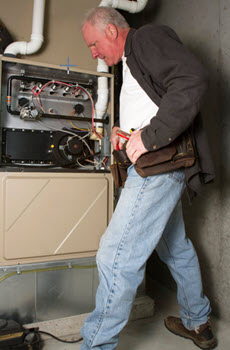New Furnace Fan Efficiency Regulations Go Into Effect July 2019
 The latest Department of Energy (DOE) regulation that applies to residential furnace fans will go into effect on July 3, 2019. The new standards will lead to a significant shift in the manufacturing process of fan motors and will eventually mean that all residences in the U.S. will ultimately contain the newer, high-efficiency motors.
The latest Department of Energy (DOE) regulation that applies to residential furnace fans will go into effect on July 3, 2019. The new standards will lead to a significant shift in the manufacturing process of fan motors and will eventually mean that all residences in the U.S. will ultimately contain the newer, high-efficiency motors.
The goal of the new regulation is to cut down on domestic energy consumption as well as decrease carbon pollution. On a standard furnace, for example, the new rule will cause a massive reduction in energy consumption.
Because a home’s furnace typically accounts for about 10 percent of its annual power usage, the average homeowner will see about a 5 percent reduction in energy costs annually. That’s the main thrust of the new regulation.
It’s helpful for consumers to understand what a furnace fan does, what the outline of the new rule is, and what the options are concerning furnace upgrades.
What A Furnace Fan Does
Contents
The furnace fan (also called a “blower”) draws hot air in from the furnace and sends it on its way throughout the house. When the heat inside the furnace reaches the proper temperature, the electronic circuit in the unit starts the blower. The furnace fan then drives all that hot air into the venting system and out into the individual rooms of a home.
What Are The New Furnace Fan Regulations?
The U.S. Dept. of Energy sets efficiency standards for all kinds of household appliances, and the furnace is no exception. Before 2014, the DOE had never set any standard that applied to home furnaces. Up to that time, there were no energy efficiency standards for furnace fans in homes.
However, 2014 was the year when the DOE set its first standard for furnace fan efficiency. The rule meant that there would be, by July 3, 2019, a “maximum fan energy rating.” What is a fan energy rating, also known as a FER? In scientific terms, it is the amount of electric power necessary to propel one cubic foot of air each minute. This value, the FER, is expressed in watts divided by cubic-feet-per-minute.
What Is DOE’s Goal With The New Regulations?
Simply put, it is to cut residential energy use (for furnaces only) by 40 percent over the next three decades. Total consumer savings expected to result from the new rules are pegged at about $29 billion for the 30-year period. Another likely result will be the development of high-tech furnace fans and motors that will operate on much less electrical energy.
What Are The Consumer’s Options Concerning Their Furnace?

- Upgrades: For most people who own homes that are equipped with older furnaces, an HVAC upgrade of the unit is the obvious choice. However, because every home is different (regarding size, age, type of furnace, and condition of all the heating components), the smartest thing for homeowners is to seek the professional advice of a reputable HVAC company.
- Diagnosis: Professional HVAC contractors can inspect a furnace and determine the best course of action, in terms of cost savings and complying with the new regulations. Some home heaters might already be energy-efficient enough to meet the DOE’s new regulations. Most won’t.
Furnace Fan Regulations: What Consumers Need To Know
- The decision to upgrade to a new furnace is almost a necessity if the current unit is old, defective, or otherwise not getting the job done. Some consumers are ready to jump at the lowest-cost solution, which can be a mistake.
- Experienced HVAC technicians might charge more for an installation than inexperienced ones. But unless the installation is done exactly right, there are costly problems down the road. It’s better to hire an experienced HVAC tech and get the job done right, the first time.
- New furnaces are technologically more sophisticated than old ones and include a lot of computerized components. It pays to make sure that the person doing the upgrade and installation is an experienced professional.
- With the newer, more efficient furnaces, many homeowners will be pleasantly surprised to learn that the modern units are smaller than the old ones, and thus take up much less space.
Conclusion
When you need to hire a reputable HVAC contractor, you should contact Townsend Energy. We provide exceptional service for heating and cooling systems. We handle HVAC installations, repairs, and tune-ups.
All of our HVAC techs are NATE certified. They understand everything there is to know about your heating and cooling system. Our techs have the knowledge and experience to accurately diagnose any issue and give you the best, most practical solution to fix it. We will also do what we can to offer you options that will fit in with your budget.
Our techs are not only knowledgeable, but they are also extremely friendly and professional. Best of all, we guarantee our work. To schedule an appointment, give Townsend Energy a call today. We even offer free estimates.
Click here to contact us now or you can call us at (800) 888-2888 to find out more!
